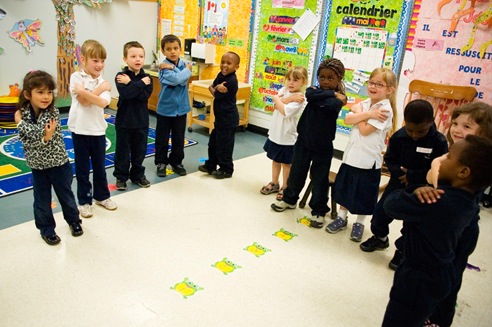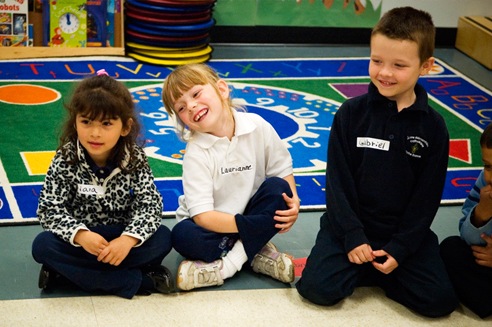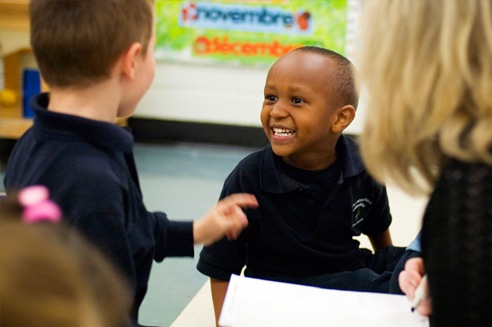
How can we make positive and lasting change?
Coherent, sustainable bullying prevention occurs in conjunction with the promotion of equity and social inclusion.
That which we call “bullying” is in fact a form of aggression, and as with all forms of aggression or violence, it constitutes the abuse of a power imbalance, a way of dominating, subjugating, controlling and humiliating another human being. Bullying can be found on the same continuum of aggressive behaviour as other forms of child assault, such as physical, sexual, verbal or psychological assault perpetrated by known adults or strangers.
Bullying is a complex social problem. It is not limited to schools and social relationships among children and teens; bullying in many forms can be found in a variety of relationships among adults as well. Furthermore, we are witnesses of bullying at all levels and in both private and public spheres of our society. Bullying can occur in families and in intimate relationships, often through violence against women and children.
It is increasingly recognized that bullying also occurs in workplaces and in institutions, in politics and in the media, though it may bear a different name when adults are involved.
 COPA understands bullying and all forms of aggression as an issue of rights. Any abuse of power, including bullying, indicates the abrogation of a person’s rights. When someone is bullied – whether through assault or discrimination – whoever perpetrates the bullying and in whatever context the bullying occurs – their rights have been compromised. COPA speaks with children and youth about the importance of respecting their own and others’ rights by communicating that all people have the right to be “safe, strong and free”.
COPA understands bullying and all forms of aggression as an issue of rights. Any abuse of power, including bullying, indicates the abrogation of a person’s rights. When someone is bullied – whether through assault or discrimination – whoever perpetrates the bullying and in whatever context the bullying occurs – their rights have been compromised. COPA speaks with children and youth about the importance of respecting their own and others’ rights by communicating that all people have the right to be “safe, strong and free”.
The question of rights is fundamental to any discussion of bullying and aggression in all their forms, and of approaches and strategies for dealing with these problems in a school environment. Since COPA asserts that all human beings have the right to be safe, strong and free, it does not recommend the use of tactics that seek to shame, humiliate or blame young people who hurt others. Instead, COPA recommends an approach that fosters empowerment, and that encourages reflection, growth and change.
 Bullying is a form of discrimination and social exclusion. Aggression that targets certain social groups is connected to attitudes, ideas and practices that denigrate, undervalue or overlook those groups and the needs and experiences of their members. These attitudes, ideas and practices filter down to our schools, which are a microcosm of the larger society. Unfortunately, these messages are often absorbed by students.
Bullying is a form of discrimination and social exclusion. Aggression that targets certain social groups is connected to attitudes, ideas and practices that denigrate, undervalue or overlook those groups and the needs and experiences of their members. These attitudes, ideas and practices filter down to our schools, which are a microcosm of the larger society. Unfortunately, these messages are often absorbed by students.
When hatred of someone who bullies is based on someone’s difference, they can and will use any perceived difference in order to hurt the person they are targeting. This can include, among other kinds of differences, those that are based on social inequality.
It is therefore critical to pay particular attention to forms of aggression and bullying that derive from larger social inequalities (sexism, racism, homophobia, social discrimination aimed at people with disabilities, members of religious minority groups, or other marginalized social groups.) It is also essential to name and denounce those forms of abuse whenever they occur, in order to validate and expose (while respecting students’ anonymity) the specific vulnerability and life experiences of students who are targeted by such acts.
 Aggression and violence are unacceptable in all cases, whatever their form. Constructive, coherent and consistent practises aimed at bullying prevention communicate this important principle to students. Child and youth assault prevention strategies that address all forms of aggression that students may experience reinforce and deepen their understanding of this basic premise.
Aggression and violence are unacceptable in all cases, whatever their form. Constructive, coherent and consistent practises aimed at bullying prevention communicate this important principle to students. Child and youth assault prevention strategies that address all forms of aggression that students may experience reinforce and deepen their understanding of this basic premise.
Effective measures and strategies for bullying prevention in school environments communicate the following messages to students (and to the whole school community):
- Everyone has the right to be “safe, strong and free”.
- All people, both young and not so young, have the right to live free from violence and abuse in all areas of their lives.
- The targeted student is never at fault or responsible for the bullying they experience.
- Adults at school are important resource people for students, providing support, playing an active role as advocates for students’ rights and protecting them from abuse.
- It is important and essential to break the code of silence that goes hand in hand with aggression, and to tell someone in order to ensure that appropriate measures are taken to put an end to the problem.
 When we work for bullying prevention in our school, in another institution or location, or in our community, we are working for the creation of “safe, strong and free” environments, and in effect, of equitable and inclusive environments. This work is closely connected to a worldwide movement striving to ensure respect for all human rights. Whether we are school staff members, or citizens of the world, we are engaged in and contributing to this movement.
When we work for bullying prevention in our school, in another institution or location, or in our community, we are working for the creation of “safe, strong and free” environments, and in effect, of equitable and inclusive environments. This work is closely connected to a worldwide movement striving to ensure respect for all human rights. Whether we are school staff members, or citizens of the world, we are engaged in and contributing to this movement.
